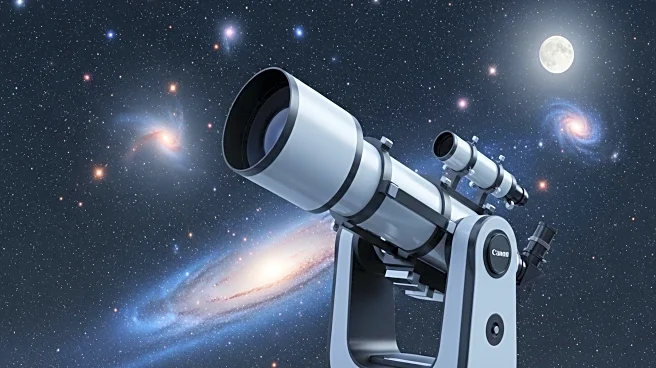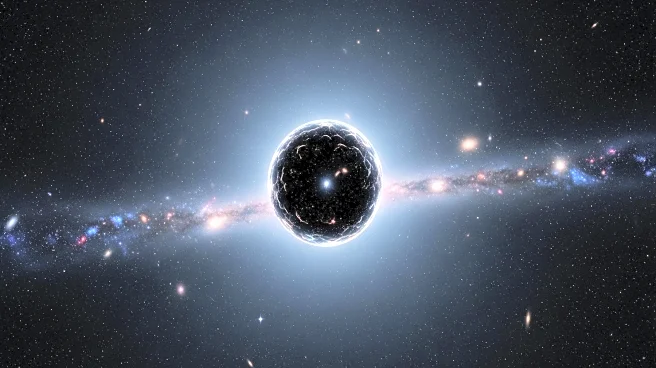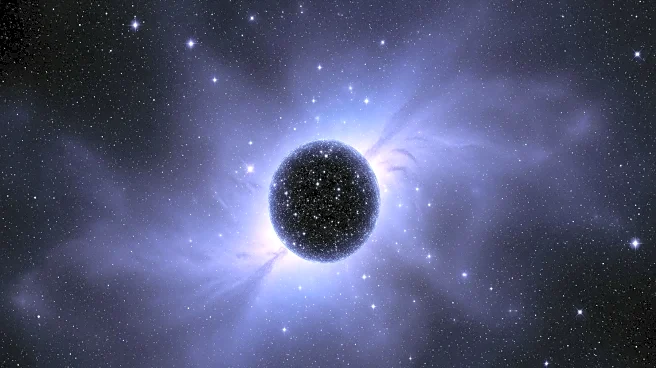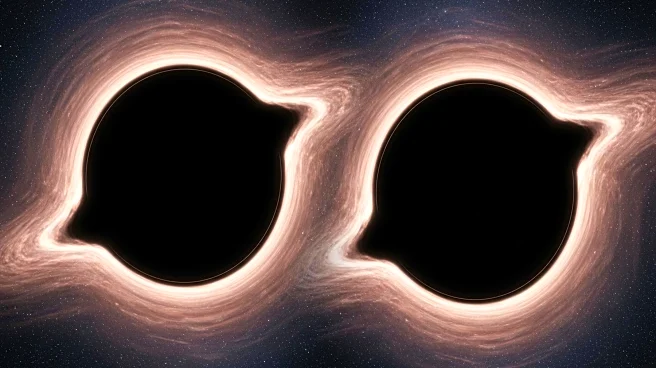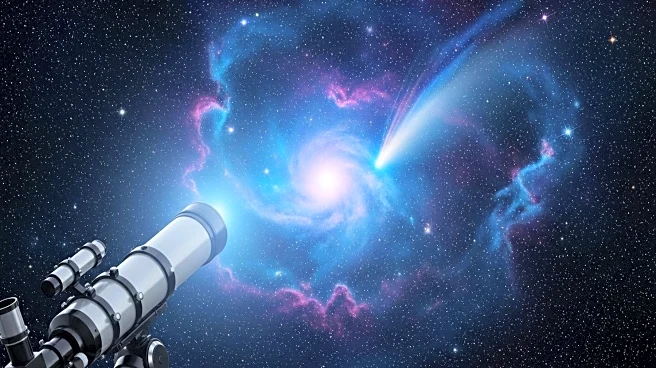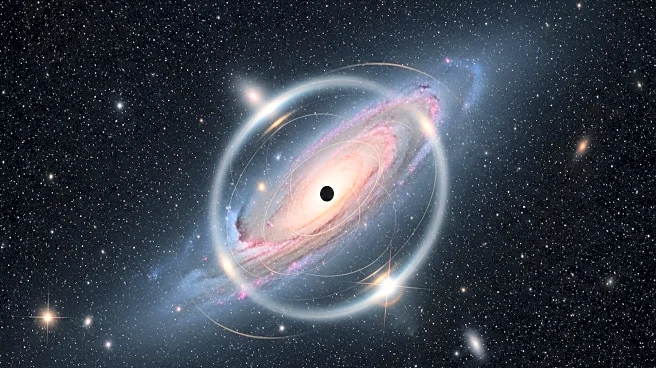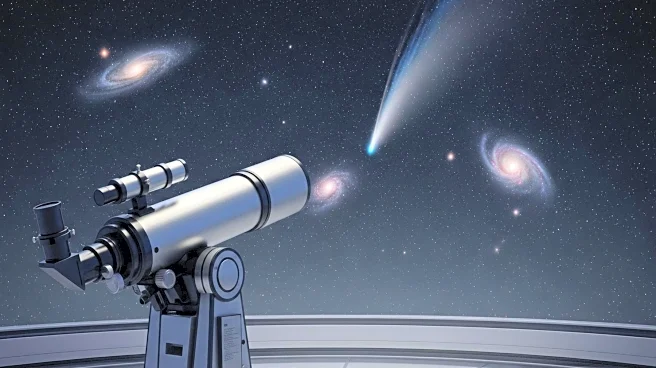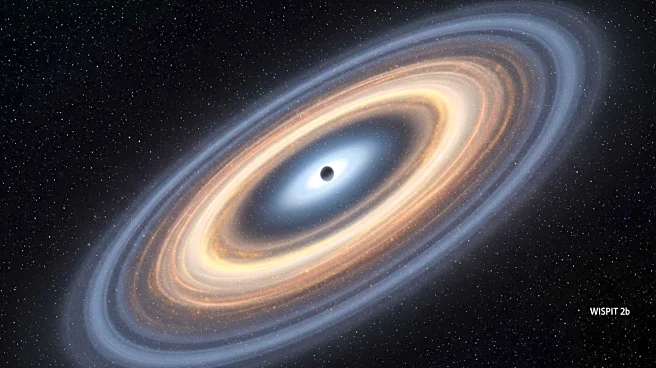What's Happening?
The Vera C. Rubin Observatory has commenced a comprehensive survey of the night sky, utilizing the Simonyi Survey Telescope and the Legacy Survey of Space and Time (LSST) camera. This initiative aims to scan the entire visible sky every three days over the next decade. The observatory, located at Cerro Pachón in Chile, employs the world's largest digital camera to capture expansive images of the universe. The Simonyi Survey Telescope is equipped with an advanced drive system, allowing it to reposition swiftly, completing exposures in as little as five seconds. This rapid movement enables the observatory to maintain an unprecedented pace in sky scanning. The LSST camera complements this by covering an area 45 times larger than the full moon with each exposure, contributing to a dynamic record of cosmic changes.
Why It's Important?
The Rubin Observatory's survey is significant for its potential to advance our understanding of the universe. By tracking asteroids, monitoring star flickers, and capturing supernovae, the observatory will provide valuable data on near-Earth objects and cosmic phenomena. Additionally, the project aims to explore profound scientific mysteries, such as the nature of dark matter and dark energy. This research could lead to breakthroughs in astrophysics and cosmology, impacting scientific theories and models. The observatory's findings may also influence public policy and funding decisions related to space exploration and research.
What's Next?
As the Rubin Observatory continues its survey, it is expected to produce a wealth of data that will be analyzed by scientists worldwide. The ongoing project will likely lead to collaborations with other research institutions and may prompt further technological advancements in telescopic equipment. Stakeholders, including government agencies and scientific communities, may respond by increasing support for space research initiatives. The observatory's discoveries could also inspire educational programs and public interest in astronomy.
Beyond the Headlines
The Rubin Observatory's work may have ethical and cultural implications, particularly in how humanity perceives its place in the universe. The exploration of dark matter and energy challenges existing scientific paradigms, potentially leading to philosophical debates about the nature of reality. Additionally, the observatory's findings could influence cultural narratives about space and inspire artistic interpretations of cosmic phenomena.
